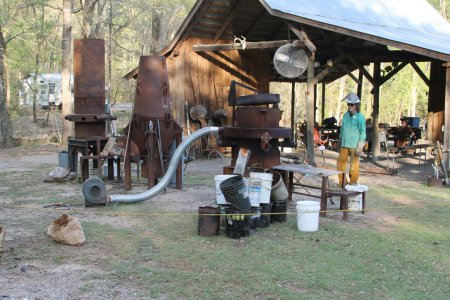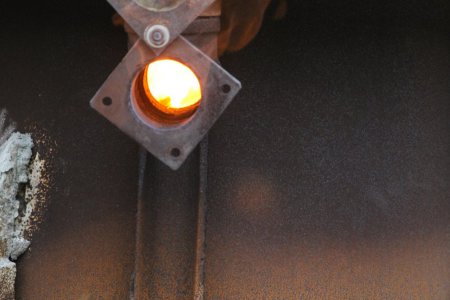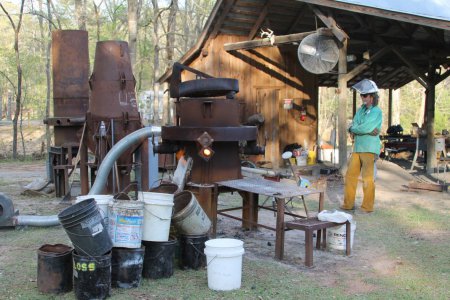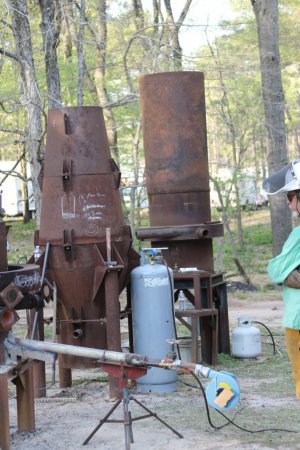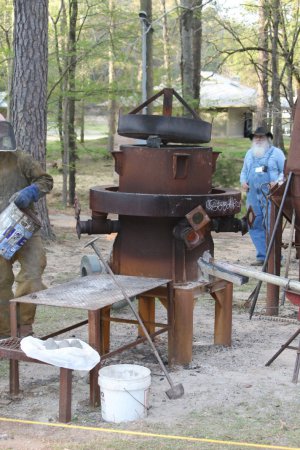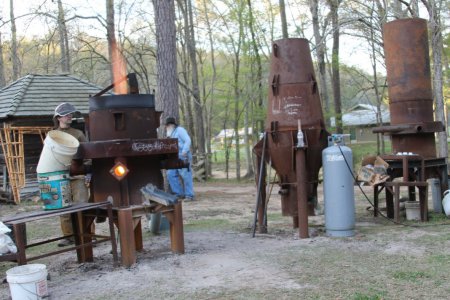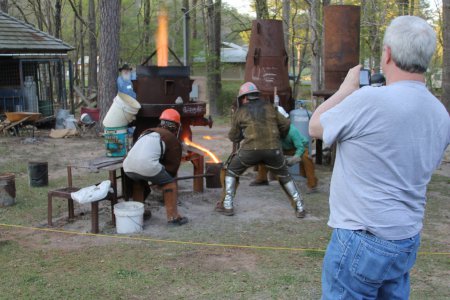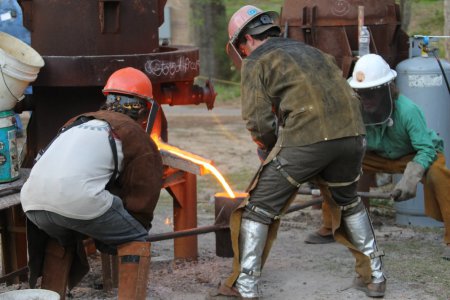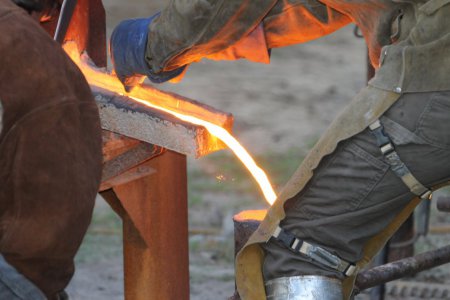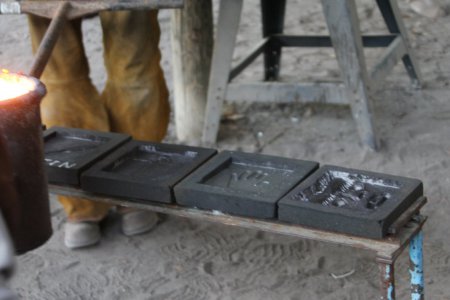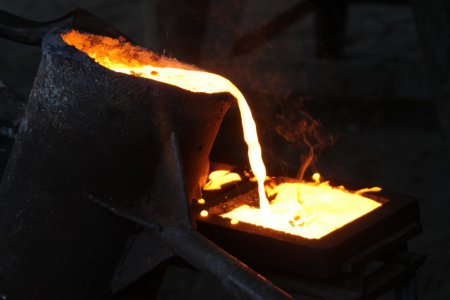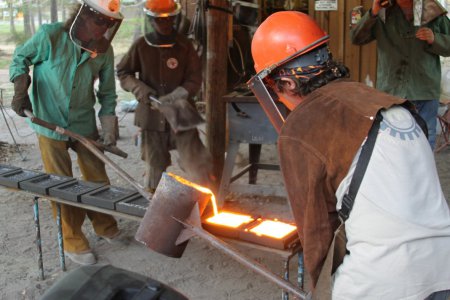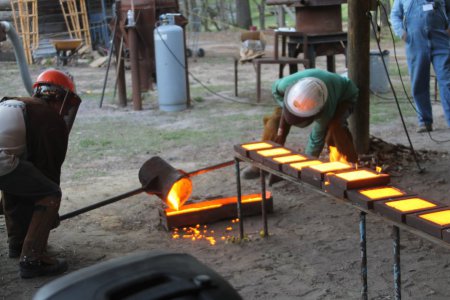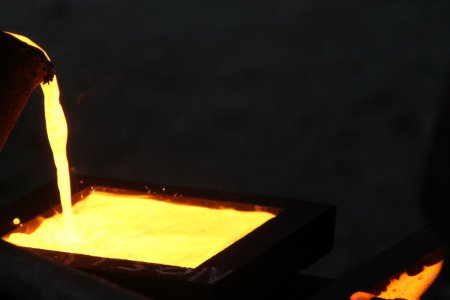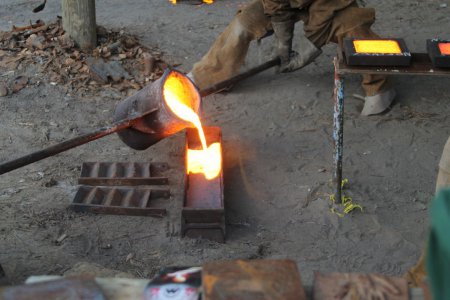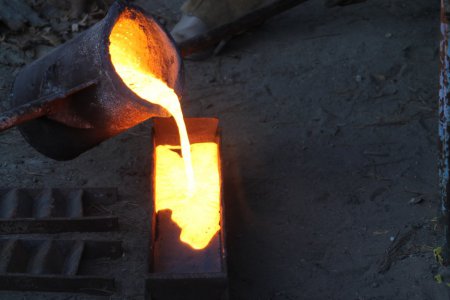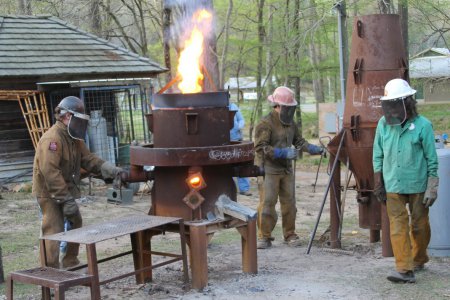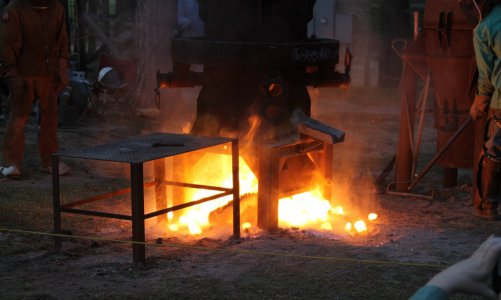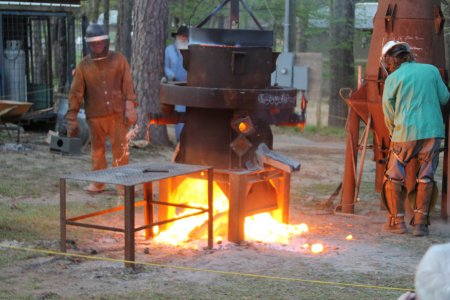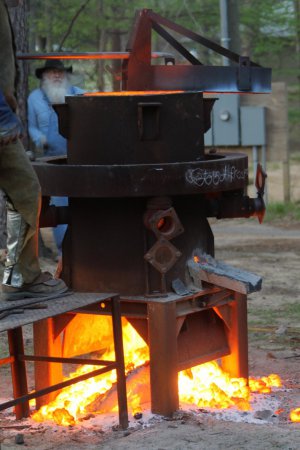-
Welcome back Guest! Did you know you can mentor other members here at H-M? If not, please check out our Relaunch of Hobby Machinist Mentoring Program!
You are using an out of date browser. It may not display this or other websites correctly.
You should upgrade or use an alternative browser.
You should upgrade or use an alternative browser.
My Iron-Melting Furnace
- Thread starter greentwin
- Start date
- Joined
- Aug 6, 2015
- Messages
- 4,169
In the past, I had looked at the sets they have in Amazon... but now looking at what you did, the stuff in Amazon seems like it will be good to make something the size of coins.... lolYou are welcome.
I would like to see more folks get into iron casting.
Perhaps even start an iron casting club, with regional iron-casting festivals/events and such.
The art-iron festivals that I have attended have been instrumental in teaching me how to consistently and successfully cast gray iron, and I am very grateful to those folks for showing me how to do it correctly.
.
- Joined
- Jun 21, 2022
- Messages
- 84
Some folks cast things on a jewelry scale, and some I know pour with a #70 that contains almost 200 lbs of iron.
They do make small tabletop electric furnaces, mainly used in the jewelry business.
A buddy of mine purchased one, and he expressed concerns about how long it would last (not sure if he meant how long the furnace elements would last, or how long the crucible will last).
It is basically whatever suits your budget and expectations.
If in doubt, begin with a minimal and inexpensive setup, and find out if you really want to be in the casting hobby.
Some folks pour a few ingots, and are done with casting in general, and there is nothing wrong with that.
.
They do make small tabletop electric furnaces, mainly used in the jewelry business.
A buddy of mine purchased one, and he expressed concerns about how long it would last (not sure if he meant how long the furnace elements would last, or how long the crucible will last).
It is basically whatever suits your budget and expectations.
If in doubt, begin with a minimal and inexpensive setup, and find out if you really want to be in the casting hobby.
Some folks pour a few ingots, and are done with casting in general, and there is nothing wrong with that.
.
- Joined
- Jun 21, 2022
- Messages
- 84
This is my pouring shank.
I have seen a wide variety of pouring shanks, and they vary from a good design to an almost worthless design.
The intent of my shank is as follows:
1. Protect the lifting hand from the radiant heat of the crucible, which is extremely high with iron pours.
2. Provide very good control of the pour rate, when the crucible is in the pouring position, and thus the handle on my pouring shank facing downwards.
3. Positively lock the crucible into the shank with no possibility of the crucible slipping out of the shank, regardless of irregularities between various crucibles of the same size, and regardless of exactly how the crucible rests in the shank.
One of the critical keys to making good castings is to avoid interrupting the pour as you are filling the mold.
If you are struggling to hold the pouring shank, and your wrists and arms are in an awkward and strained position, most likely you will be spilling metal all over, and interrupting the pour.
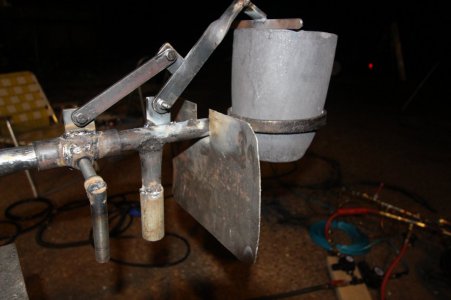
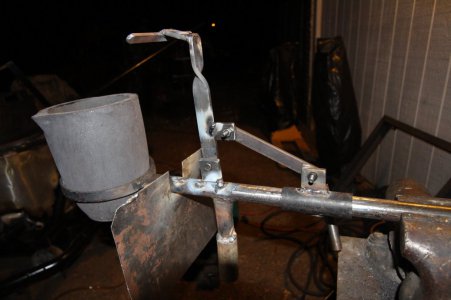
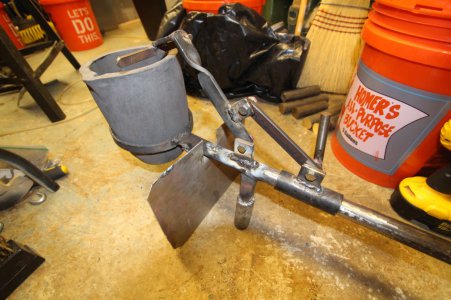
I have seen a wide variety of pouring shanks, and they vary from a good design to an almost worthless design.
The intent of my shank is as follows:
1. Protect the lifting hand from the radiant heat of the crucible, which is extremely high with iron pours.
2. Provide very good control of the pour rate, when the crucible is in the pouring position, and thus the handle on my pouring shank facing downwards.
3. Positively lock the crucible into the shank with no possibility of the crucible slipping out of the shank, regardless of irregularities between various crucibles of the same size, and regardless of exactly how the crucible rests in the shank.
One of the critical keys to making good castings is to avoid interrupting the pour as you are filling the mold.
If you are struggling to hold the pouring shank, and your wrists and arms are in an awkward and strained position, most likely you will be spilling metal all over, and interrupting the pour.



- Joined
- Aug 6, 2015
- Messages
- 4,169
I was just thinking of something small but big enough to make material that I can turn in the lathe or milling machine... I just wanted to give it a try.Some folks cast things on a jewelry scale, and some I know pour with a #70 that contains almost 200 lbs of iron.
They do make small tabletop electric furnaces, mainly used in the jewelry business.
A buddy of mine purchased one, and he expressed concerns about how long it would last (not sure if he meant how long the furnace elements would last, or how long the crucible will last).
It is basically whatever suits your budget and expectations.
If in doubt, begin with a minimal and inexpensive setup, and find out if you really want to be in the casting hobby.
Some folks pour a few ingots, and are done with casting in general, and there is nothing wrong with that.
.
I will revisit and get something in a few years... after we finally move to the new house... right now we are in between houses... this going back and forth is wearing me out...
- Joined
- Jun 21, 2022
- Messages
- 84
These are my charging tongs.
I purchased them, but should have just fabricated my own.
I do not like these tongs, and they tend to bend and let the scrap metal slip out of the jaws.
I am going to make some new tongs with more rigid handles, and jaws with small teeth.
Charging tongs are used both for adding scrap metal to the furnace while it is operating, and also to hold scrap above the opening in the lid to drive off residual moisture that is on all metal.
The resitual moisture that is on scrap metal is not apparent, but if you drop a piece of scrap into a pool of molten metal without drying the metal for about 20 seconds in the exhaust stream, you may have an explosion, with all of the molten metal ejected from the crucible and furnace.
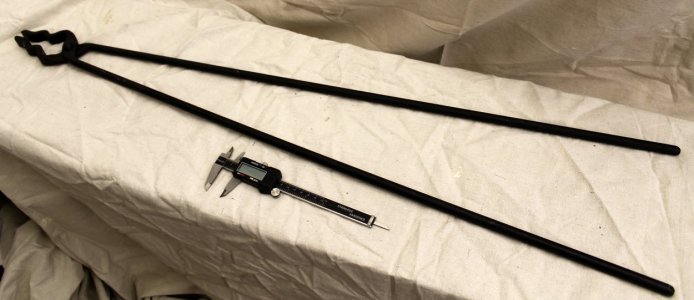
I purchased them, but should have just fabricated my own.
I do not like these tongs, and they tend to bend and let the scrap metal slip out of the jaws.
I am going to make some new tongs with more rigid handles, and jaws with small teeth.
Charging tongs are used both for adding scrap metal to the furnace while it is operating, and also to hold scrap above the opening in the lid to drive off residual moisture that is on all metal.
The resitual moisture that is on scrap metal is not apparent, but if you drop a piece of scrap into a pool of molten metal without drying the metal for about 20 seconds in the exhaust stream, you may have an explosion, with all of the molten metal ejected from the crucible and furnace.

- Joined
- Jun 21, 2022
- Messages
- 84
Here is a BIG art-iron pour held at Carrie.
Due to the pandemic, I have not made it to an iron pour at Carrie, but it is definitely on my list of things to do.

 riversofsteel.com
riversofsteel.com
Sloss is another big iron pour that is on my bucket list to attend, and I plan to bring my furnace and make iron there too !
And unfortunately I don't recall who sent me these photos, and so I can credit them correctly (they are not my photos).
That is a pretty hefty ladle isn't it ?
Notice lots and lots of leather, and full face shields and hardhats.
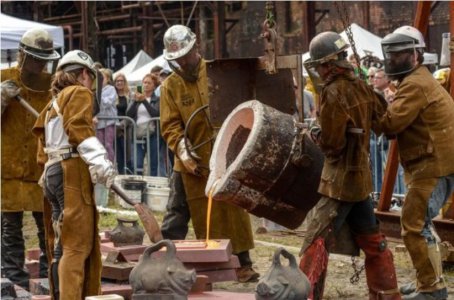
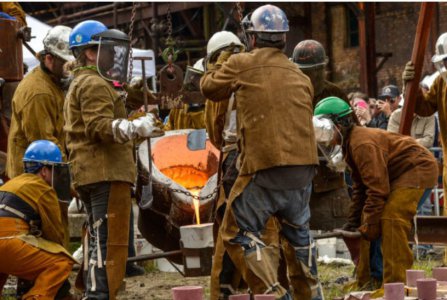
Due to the pandemic, I have not made it to an iron pour at Carrie, but it is definitely on my list of things to do.

Carrie Blast Furnaces National Historic Landmark
A remnant of the U.S. Steel Homestead Works, the Carrie Blast Furnaces are a vestige of Pittsburgh’s 20th-century domination of the steel industry.
Sloss is another big iron pour that is on my bucket list to attend, and I plan to bring my furnace and make iron there too !
And unfortunately I don't recall who sent me these photos, and so I can credit them correctly (they are not my photos).
That is a pretty hefty ladle isn't it ?
Notice lots and lots of leather, and full face shields and hardhats.


- Joined
- Jun 21, 2022
- Messages
- 84
I am actually a member of the Sloss group, but due to the pandemic, I have not been able to get involved.
I do plan on taking my furnace to Sloss the next time they have an art-iron pour.

 www.slossfurnaces.com
www.slossfurnaces.com
I do plan on taking my furnace to Sloss the next time they have an art-iron pour.

Sloss Furnaces National Historic Landmark - Birmingham, Alabama
Sloss Furnaces is a National Historic Landmark and industrial museum in Birmingham, AL. Visits at this time are by appointment only.
- Joined
- Jun 21, 2022
- Messages
- 84
The Soule Museum in Merridian MS also has several iron pours every year.
Soule still has their original massive cupola-style furnace.
Soule is where all of the Speedy-Twin steam engines were made, and the assembly area is still intact at the museum, with partially finished Speedy Twin engines on the tables.
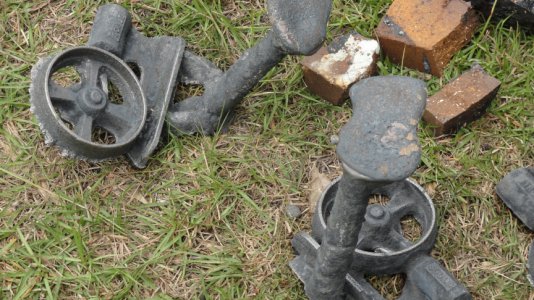
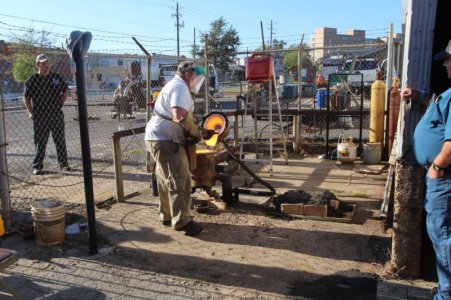
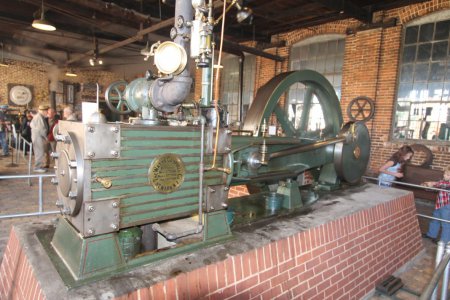
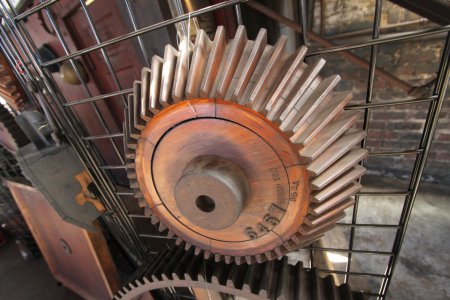
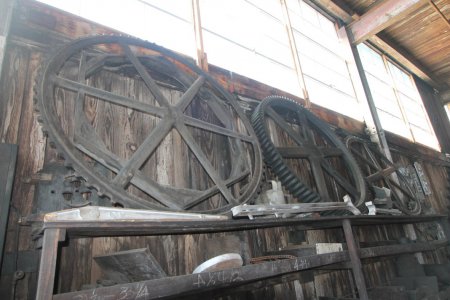
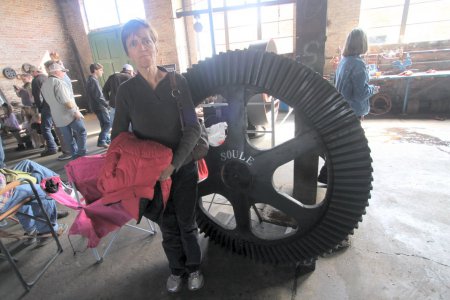
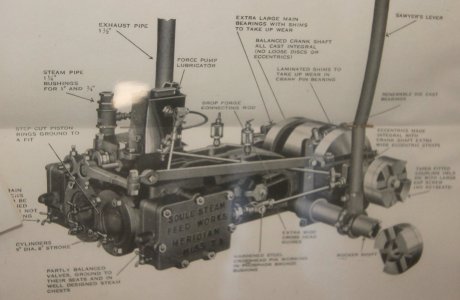
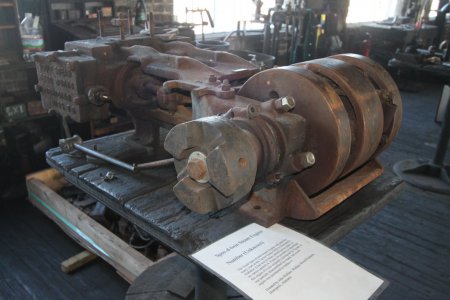
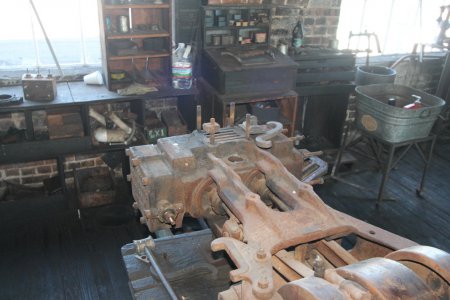
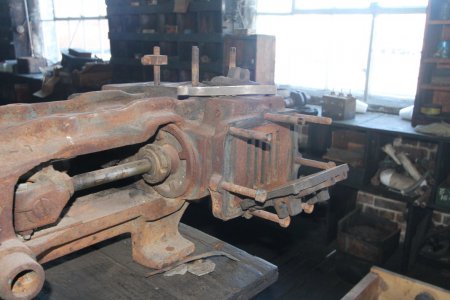

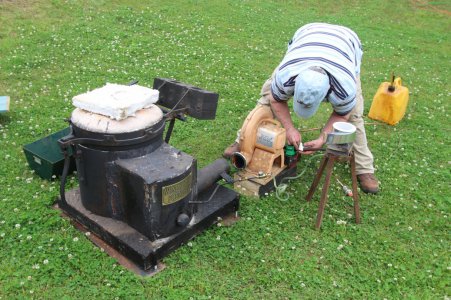
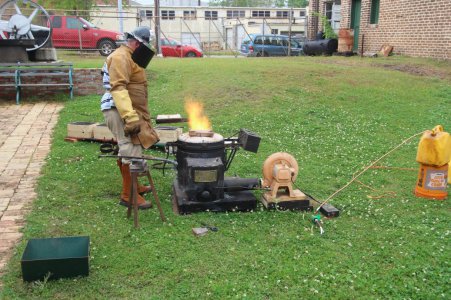
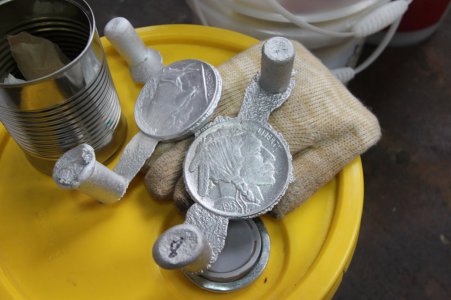
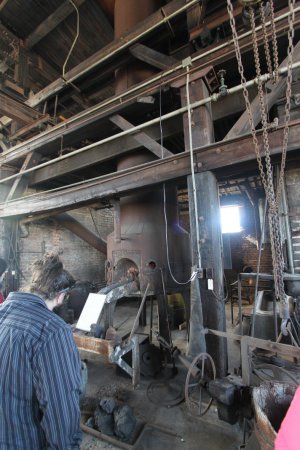
Soule still has their original massive cupola-style furnace.
Soule is where all of the Speedy-Twin steam engines were made, and the assembly area is still intact at the museum, with partially finished Speedy Twin engines on the tables.















Last edited:

